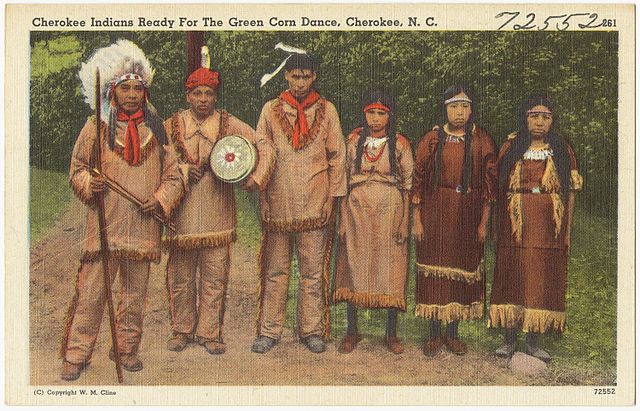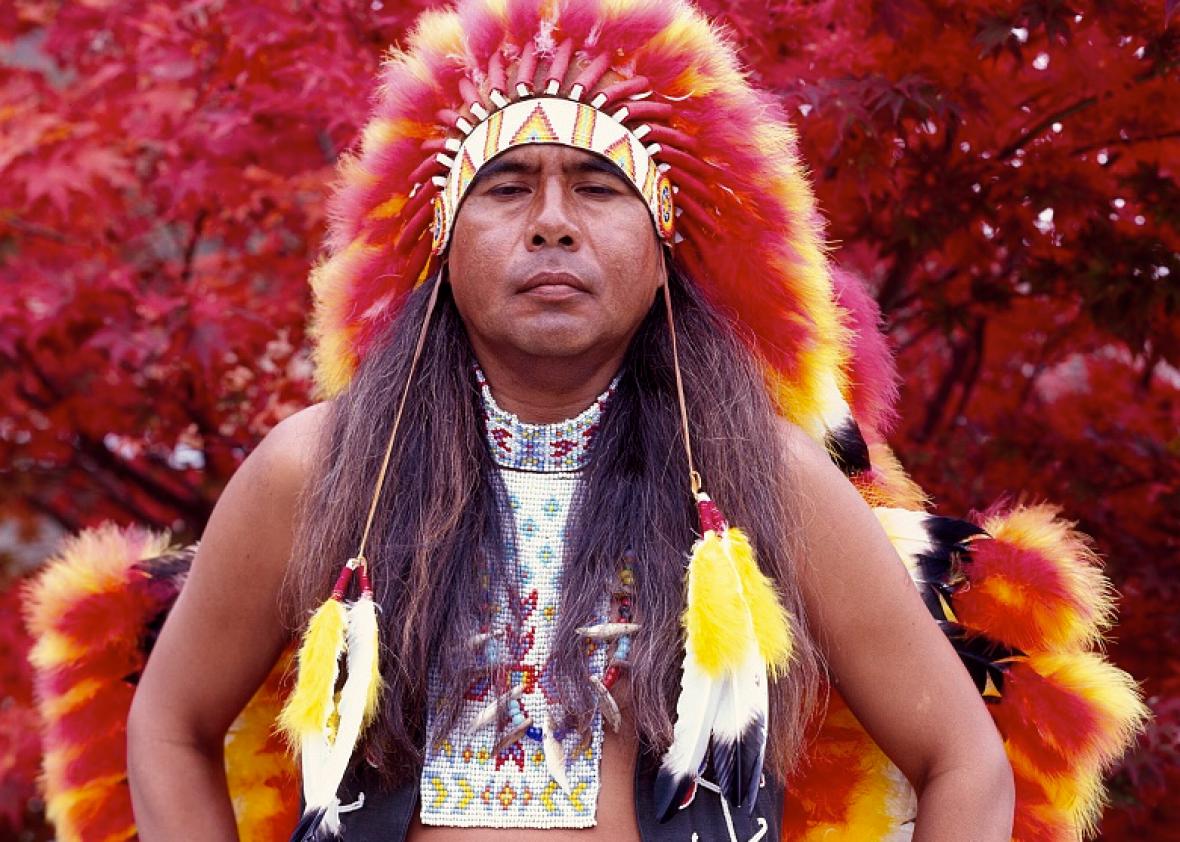Unraveling the Tapestry: The Cherokee Nation, America’s Largest Native American Tribe
Unraveling the Tapestry: The Cherokee Nation, America’s Largest Native American Tribe

The Cherokee Nation, a vibrant and resilient tribe with a rich history and enduring legacy, stands as the largest Native American tribe in the United States. With a population exceeding 400,000 members, the Cherokee Nation has played a pivotal role in shaping the cultural and political landscape of the nation. This article delves into the captivating story of the Cherokee Nation, exploring its origins, cultural practices, historical struggles, and remarkable journey towards self-determination.
From the Mountains to the Trail of Tears:
Related Articles: Unraveling the Tapestry: The Cherokee Nation, America’s Largest Native American Tribe
- Unlocking The Spirit Within: A Guide To Native American Name Generators And Their Meaning
- The Legendary Chief Blackfoot: Unveiling the Untold Story
- Unveiling the Southwest Native American Tapestry of Customs and Folklore
- Experience the Vibrant Potawatomi Powwow: A Celebration of Tradition!
- Unveiling the Enigmatic Tale of the Coahiltecan Maiden
The Cherokee Nation’s history is deeply intertwined with the rugged beauty of the Appalachian Mountains, where their ancestors established a thriving civilization centuries ago. The name "Cherokee" itself stems from the Iroquoian word "Tsalagi," meaning "people."
Their culture was rich in tradition, encompassing intricate beadwork, pottery, basket weaving, and storytelling. They were known for their sophisticated political system, with a strong sense of community and a written language called "Sequoyah," developed by a remarkable Cherokee scholar.
However, the Cherokee Nation’s history is also marked by immense hardship. As westward expansion swept across the United States, the Cherokee found themselves facing increasing pressure from the encroaching white settlers. The Indian Removal Act of 1830, signed by President Andrew Jackson, authorized the forced relocation of Native American tribes from their ancestral lands to designated territories west of the Mississippi River.
This tragic event, known as the Trail of Tears, saw the Cherokee Nation forcibly removed from their homeland and subjected to brutal conditions. Thousands perished during the arduous journey, their ancestral lands stolen and their culture threatened.
Resilience and Revival:
Despite the devastating blow of the Trail of Tears, the Cherokee Nation’s spirit remained unbroken. They persevered in their new territory, adapting to a new environment and maintaining their cultural traditions. They established schools, churches, and a government, seeking to preserve their heritage and rebuild their lives.
In the 20th century, the Cherokee Nation embarked on a journey towards self-determination. They fought for recognition of their sovereignty and established the Cherokee Nation Businesses, a successful economic enterprise that has played a significant role in the tribe’s economic development and self-sufficiency.
Contemporary Cherokee Nation:

Today, the Cherokee Nation is a thriving community with a strong sense of identity and purpose. The tribe’s headquarters are located in Tahlequah, Oklahoma, where a vibrant cultural center, museums, and educational institutions celebrate and preserve Cherokee heritage.
The Cherokee Nation has made significant strides in health care, education, and economic development. It operates its own court system, law enforcement agencies, and a health care system that provides comprehensive services to its citizens. The tribe also prioritizes the preservation of its language, culture, and traditions through various programs and initiatives.
Cultural Practices and Traditions:
The Cherokee Nation’s cultural heritage is a testament to their resilience and enduring spirit. Traditional arts and crafts, including beadwork, pottery, basket weaving, and carving, continue to be practiced and celebrated. The Cherokee language, once threatened, is experiencing a revival, with language immersion programs and educational initiatives aimed at preserving this vital part of their identity.
The Cherokee Nation also holds onto its rich oral traditions, passed down through generations in the form of stories, songs, and dances. These traditions not only provide a window into their past but also serve as a reminder of their enduring spirit and cultural identity.

Government and Governance:
The Cherokee Nation operates as a sovereign government, with its own constitution, laws, and elected officials. The Cherokee Nation’s government is structured around a system of checks and balances, with a democratically elected principal chief serving as the head of state.
The Cherokee Nation government plays a crucial role in representing the interests of its citizens and advocating for their rights. It also oversees various programs and services aimed at promoting economic development, education, health care, and cultural preservation.
Economic Development:
The Cherokee Nation has made remarkable progress in economic development, driven by its commitment to self-sufficiency and diversification. The Cherokee Nation Businesses, a successful enterprise that encompasses a wide range of industries, has played a significant role in the tribe’s economic growth.

The Cherokee Nation Businesses operates in sectors such as gaming, hospitality, construction, technology, and energy, providing employment opportunities for tribal members and contributing to the overall economic well-being of the tribe.
Challenges and Opportunities:
Despite the progress made, the Cherokee Nation continues to face challenges in areas such as economic inequality, access to quality education, and preserving its cultural heritage.
The tribe is actively working to address these challenges through various programs and initiatives aimed at promoting economic opportunity, educational attainment, and cultural preservation. The Cherokee Nation is also committed to advocating for the rights of its citizens and working towards a more equitable future for all Native Americans.
Conclusion:
The Cherokee Nation’s journey has been one of resilience, adaptation, and self-determination. From the mountains of their ancestral lands to the plains of Oklahoma, the Cherokee Nation has faced immense challenges, yet they have emerged as a thriving and vibrant community. Their story is a testament to the enduring spirit of Native American tribes, their cultural richness, and their unwavering commitment to preserving their heritage and traditions.
The Cherokee Nation stands as a beacon of hope and inspiration, demonstrating the power of cultural resilience and the importance of self-determination. Their story continues to unfold, offering a glimpse into the future of Native American communities and their ongoing struggle for recognition, respect, and a brighter tomorrow.
FAQ about the Cherokee Nation:
1. What is the largest Native American tribe in the United States?
The Cherokee Nation is the largest Native American tribe in the United States, with a population exceeding 400,000 members.
2. Where is the Cherokee Nation located?
The Cherokee Nation’s headquarters are located in Tahlequah, Oklahoma. However, the tribe’s ancestral lands originally spanned parts of what are now North Carolina, Georgia, Tennessee, and Alabama.
3. What is the Cherokee Nation’s government structure?
The Cherokee Nation operates as a sovereign government with its own constitution, laws, and elected officials. The tribe’s government is structured around a system of checks and balances, with a democratically elected principal chief serving as the head of state.
4. What are some of the cultural practices and traditions of the Cherokee Nation?
The Cherokee Nation’s cultural heritage is rich in tradition, encompassing intricate beadwork, pottery, basket weaving, storytelling, and a unique written language called "Sequoyah."
5. How has the Cherokee Nation been involved in economic development?
The Cherokee Nation has made significant progress in economic development through the Cherokee Nation Businesses, a successful enterprise that operates in various sectors, including gaming, hospitality, construction, technology, and energy.
6. What are some of the challenges facing the Cherokee Nation today?
The Cherokee Nation continues to face challenges such as economic inequality, access to quality education, and preserving its cultural heritage. The tribe is actively working to address these challenges through various programs and initiatives.
7. What is the significance of the Trail of Tears for the Cherokee Nation?
The Trail of Tears represents a tragic period in Cherokee history, marking the forced removal of the tribe from its ancestral lands to designated territories west of the Mississippi River. This event resulted in immense hardship and loss of life for the Cherokee people.
8. What are the Cherokee Nation’s efforts to preserve its language and culture?
The Cherokee Nation prioritizes the preservation of its language and culture through various programs and initiatives, including language immersion programs, cultural centers, museums, and educational institutions.
9. How can I learn more about the Cherokee Nation?
You can learn more about the Cherokee Nation by visiting their official website, exploring their cultural centers and museums, and engaging with their educational resources. You can also support the tribe by participating in their events and initiatives.

Closure
Thus, we hope this article has provided valuable insights into Unraveling the Tapestry: The Cherokee Nation, America’s Largest Native American Tribe. We hope you find this article informative and beneficial. See you in our next article!